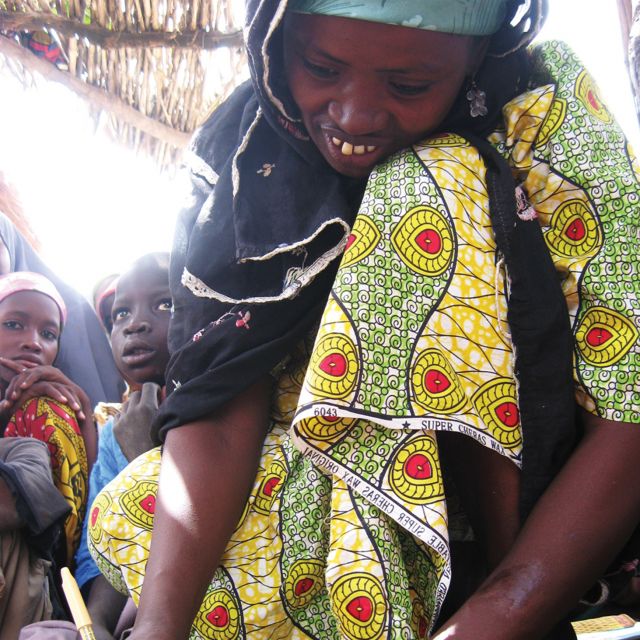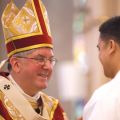Fr. Raymond J. de Souza is the pastor of Sacred Heart of Mary parish on Wolfe Island, and chaplain at Newman House at Kingston, Ont.'s Queen's University.
The question arises because last June I wrote in this column that CCODP “has a tenuous claim on Catholic dollars because, aside from fundraising in Catholic parishes, they have a tenuous relationship with any distinctively Catholic mission. In their operations they are largely — and by their own proud design — indistinguishable from any number of peace and justice NGOs working in the developing world.”
The bishops of Canada take a different view and, in a March 22 statement, urged Catholics to redouble their generosity during the annual Share Lent campaign. In Kingston, our own archbishop sent a message to all parishes to that effect. I included it in my parish bulletin in the space usually reserved for my own message.
Reconfiguring the episcopate
By Fr. Raymond J. de SouzaHow do you reform an episcopate and provide new leadership for the Church in a particular nation? Canada is now the model for the Church universal on how it can be done.
The dramatic appointment of Christian Lépine as the new archbishop of Montreal, only six months after he was ordained an auxiliary bishop of the same diocese, has drawn attention to Canada as the exemplar of how an episcopate can be reconfigured for the challenges of the new evangelization.
Just 18 months ago, in the fall of 2010, Cardinal Marc Ouellet, former archbishop of Quebec City, arrived in Rome as the new prefect of the Congregation for Bishops. The prefect is the most senior advisor to the Holy Father on the appointment of bishops. High on the new prefect’s agenda was the renewal of the bishops of Quebec, with a number of retirements pending.
New heights for anti-Catholicism in America
By Fr. Raymond J. de SouzaWASHINGTON, DC - In the long history of anti-Catholicism, the epithets vomited at the Church and Catholics are numerous and colourful: Whore of Babylon, anti-Christ, mother of harlots, heretical, pagan, idolatrous, satanic, alien, ignorant, anti-intellectual, slavish and a personal favourite, the “two-horned monster of Rome,” which is how a few rabid Orthodox monks protested Blessed John Paul’s visit to Greece.
So it was a novelty to encounter another anti-Catholic image: the battered woman. Last week Catholics were told: “You’re better than your Church, so why stay? Apparently, you’re like the battered woman who, after being beaten down every Sunday, feels she has no place else to go.”
A winding road to unity
By Fr. Raymond J. de SouzaVATICAN CITY - In the days after the hoopla of the consistory for new cardinals left town, a smaller but more historic group of pilgrims was making its way to the tomb of the apostle Peter and the seat of his successor.
A pilgrimage of thanksgiving arrived from Britain — some 100 members of the Personal Ordinariate of Our Lady of Walsingham, the new “diocese” set up for former Anglicans who are now Catholics, but with the special task of preserving their Anglican cultural and liturgical patrimony. Some two years after Pope Benedict XVI made it possible with his document Anglicanorum Coetibus, the new structure is established in Britain and more recently also in the United States. The arrival of new Catholics from Britain, small in number but fervent in faith, was experienced as a “homecoming” by them, and a tiny step toward healing the breach of the divisions of the 16th century.
Sunday’s shifting solemnities
By Fr. Raymond J. de SouzaVATICAN CITY - Consistories for new cardinals are usually held on major feasts, and the most recent one had a lesson for the liturgical life of parishes.
Blessed John Paul II held six of his nine consistories on Petrine feasts — three for Sts. Peter and Paul (June 29), two for the Chair of Peter (Feb. 22) and one for his silver jubilee as Successor of Peter in October 2003. Benedict held his first consistory in 2006 on the Feast of the Annunciation, and his next two on Christ the King in 2007 and 2010. This year he chose the Chair of Peter, the feast which highlights the role of Peter and his successors in authoritatively teaching the deposit of the faith.
The logic of the Gospel is a challenge, and remains so, even for cardinals
By Fr. Raymond J. de SouzaVATICAN CITY - Attending a consistory for new cardinals is something of an ambivalent thing. On balance it is a positive experience, a festive occasion to be sure. Yet there is also an uneasiness, for there are touches of worldliness about it which ought to make a Christian disciple wary.
A consistory is truly a celebration of something particularly Catholic, namely the Roman and Petrine dimensions of the Church. Such occasions of pride and joy strengthen the faith, as they reinforce the bonds of affection that unite Catholics with the successor of St. Peter. The link between the local bishop created a cardinal and the Bishop of Rome is evident enough, and it highlights the communion of all local bishops with the See of Rome, and therefore the unity of the Church universal.
A very special day for NAC
By Fr. Raymond J. de SouzaROME - In her more than 150 years, the Pontifical North American College will never have a day like Feb. 18, 2012. Pope Benedict XVI will elevate to the College of Cardinals not one, but two, former rectors of the seminary in Rome. Both Archbishop Timothy Dolan of New York, who served as rector from 1994-2001, and his immediate predecessor, Archbishop Edwin O’Brien, Grand Master of the Equestrian Order of the Holy Sepulchre of Jerusalem, will receive the red hat.
A caring man worthy of the red hat
By Fr. Raymond J. de SouzaA consistory for new cardinals is a serious affair. Forgive me then for telling a story about Thomas Christopher Cardinal-designate Collins that is less than serious, but with a serious point about the man. Which is how Toronto’s new cardinal usually does it himself — serious substance in a man who does not take himself too seriously.
On Feb. 18, Collins will receive the red hat, a cardinal’s biretta fashioned from watered silk. One of my first encounters with him involved another hat — a toque, to be precise.
God save our Queen!
By Fr. Raymond J. de SouzaIn one of those happy liturgical coincidences — or better, providences — Feb. 6 brought the following reading from the First Book of Kings at Mass:
“The elders of Israel and all the leaders of the tribes, the princes in the ancestral houses of the children of Israel, came to King Solomon in Jerusalem, to bring up the ark of the Lord’s covenant from the City of David, which is Zion. All the people of Israel assembled before King Solomon during the festival in the month of Ethanim (the seventh month). When all the elders of Israel had arrived, the priests took up the ark; they carried the ark of the Lord and the meeting tent with all the sacred vessels that were in the tent. (The priests and Levites carried them.) King Solomon and the entire community of Israel present for the occasion sacrificed before the ark sheep and oxen too many to number or count.”
Prayer, sport and whose side is God on?
By Fr. Raymond J. de SouzaSuper Bowl Sunday marks the end of the football season and a look back at the year that was. On the field it was the year of the quarterback, with Drew Brees, Tom Brady, Matthew Stafford, Eli Manning and Aaron Rodgers all putting up eye-popping numbers. Off the field, the chatter was about one quarterback, Tim Tebow of the Denver Broncos.
His improbable story was captivating enough, coming off the bench in mid-season to lead his team to the playoffs with one last-minute victory after another. It was his Christian faith, though, that sparked an international discussion about whether faith had a place in sports, whether God was on Tebow’s side or whether Tebow thought God was on his side, or whether in fact God thought He ought to be on Tebow’s side.
Fighting back against Obama’s divide-and-conquer approach
By Fr. Raymond J. de SouzaIt’s rare that a bishop indicates publicly how he intends to vote. But recent events provoked just such a response in the United States.
President Barack Obama announced on Jan. 20 that his health care plan would require all employers to purchase health insurance for their employees which would cover contraception, sterilization and abortion-inducing drugs. While churches with a moral objection would be exempt, universities and hospitals would not be. The upshot would be that Catholic institutions would be forced to purchase products directly contrary to the dictates of a conscience properly formed by the teaching of the Church.











